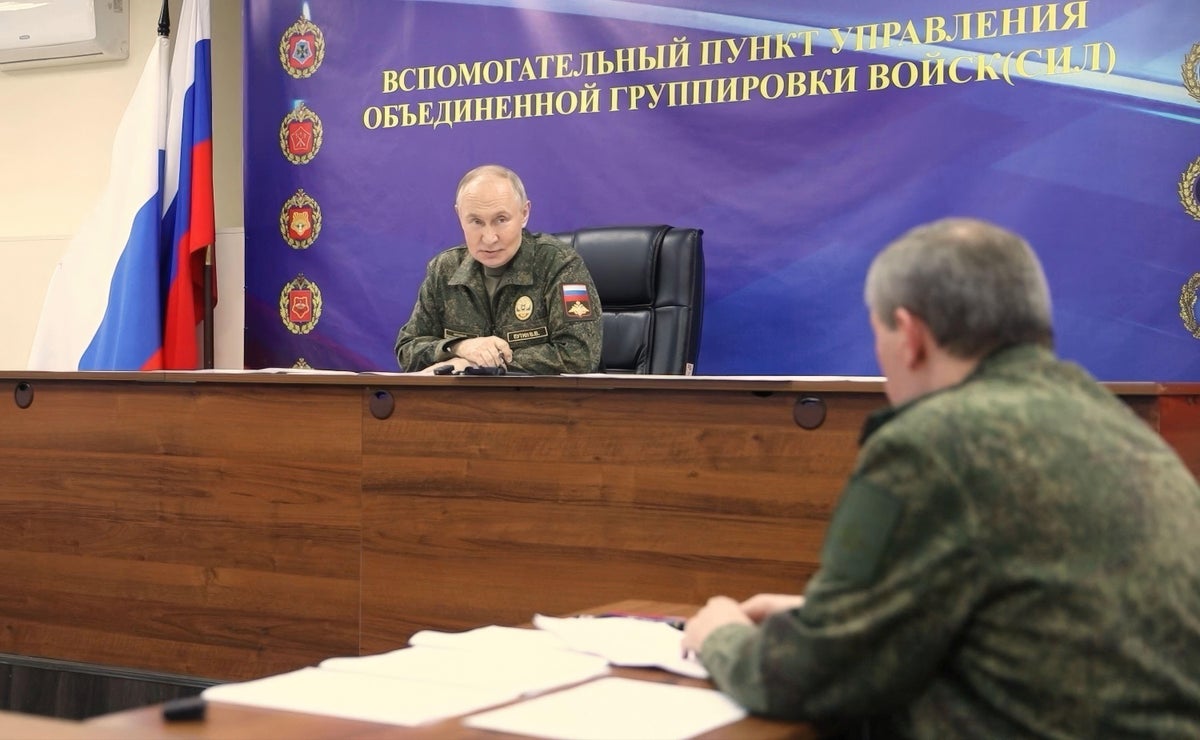On October 26, 2025, Russian President Vladimir Putin announced that Russia had successfully test-flown a nuclear-powered cruise missile, a development that has sparked considerable intrigue and concern worldwide. This missile, officially designated as the 9M730 Burevestnik—named after a seabird known for its long, low flights—is touted by Russian authorities as a groundbreaking weapon that no other nation currently possesses. According to Russia’s Chief of the General Staff, Valery Gerasimov, the missile reportedly flew approximately 8,700 miles over 15 hours during its recent test flight. However, experts and observers remain cautious, with many questions about the missile’s design, functionality, and strategic value still unanswered.
To understand the significance of the Burevestnik missile, it is crucial to grasp what a nuclear-powered cruise missile entails. Traditional cruise missiles are essentially flying jet engines equipped with warheads. They rely on conventional fuel combustion to generate thrust, allowing them to fly at subsonic speeds, often at low altitudes to evade radar detection and air defenses. For example, the United States’ latest long-range cruise missile, the nuclear-armed AGM-181, can fly more than 1,500 miles using a conventional jet engine. These missiles are launched either from rockets or high-speed aircraft to initiate airflow through their engines, which compress incoming air, mix it with fuel, and burn this mixture to produce thrust.
In contrast, a nuclear-powered cruise missile replaces the conventional jet engine with a nuclear reactor. The reactor heats incoming air directly, producing thrust without the need for burning fuel, which theoretically grants the missile an “unlimited” range. This concept is not new; during the 1960s, the U.S. pursued a similar project called Project Pluto, which aimed to develop a nuclear-powered missile but was eventually abandoned due to the immense risks involved. Russia’s Burevestnik seeks to revive this idea, with Putin emphasizing its potential to circumvent current missile defenses.
Despite the bold claims, the technical challenges of flying a nuclear-powered missile are formidable. Nuclear reactors are inherently heavy, generate intense heat, and are complex systems—characteristics that complicate their integration into an aerodynamic missile. According to experts like Cheryl Rofer, a former chemist at Los Alamos National Laboratory, these challenges cast doubt on Russia’s announced breakthrough. For instance, to handle the high temperatures, the missile’s reactor might be constructed from brittle ceramic materials, which are more prone to damage. Cooling the reactor during flight could require the inclusion of boreholes for airflow, increasing the missile’s weight and complexity. Moreover, an “open” reactor design, which directly heats the air passing through it, risks releasing radioactive particles into the atmosphere as the missile flies, posing severe environmental and health hazards.
Alternatively, a “closed” reactor design would use a heavy heat exchanger to transfer heat from the reactor to the airflow without releasing radioactive exhaust. While safer in terms of radioactive contamination, this design adds significant weight and mechanical complexity, increasing the likelihood of malfunctions mid-flight. Additionally, reactors are sensitive to environmental factors such as rain, wind gusts, and bird strikes, especially during low-altitude flight, which could disrupt airflow and degrade reactor performance. These vulnerabilities underline why experts are skeptical about the missile’s operational reliability.
The history of the Burevestnik project includes a tragic incident in 2019, when an explosion during a reactor test killed at least seven people and released radioactive contamination near a test site in northern Russia. This incident highlights the inherent dangers of developing and testing nuclear-powered propulsion systems for missiles.
Another major challenge is ensuring the missile’s reactor remains intact upon landing during tests to prevent radiological disasters. This requirement likely necessitates additional structural reinforcements, which further increase the missile’s weight and potentially reduce its performance.
Despite these hurdles, some analysts, such as Chris Spedding of the British American Security Information Council, believe that Russia may have overcome the principal technical barrier: the reactor design. However, even if the missile’s reactor functions as claimed, many questions remain about its strategic value. The missile reportedly flies at subsonic speeds, meaning that once detected, it is no more difficult to intercept than existing conventional cruise missiles. Moreover, the longer a missile flies, the easier it becomes to track and target with air defenses, making it susceptible to being shot down before reaching its target.
Currently, the global community awaits concrete evidence confirming the missile’s flight and its technical details

